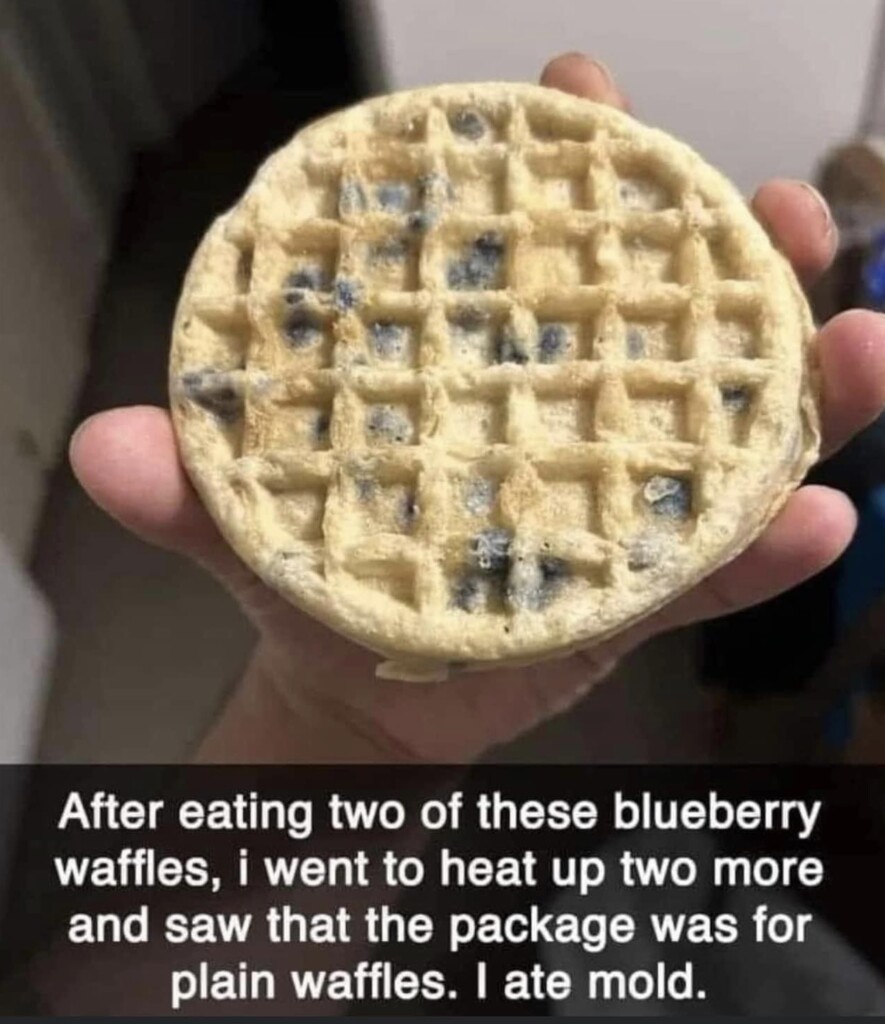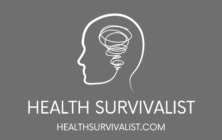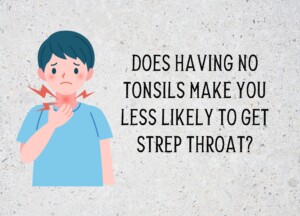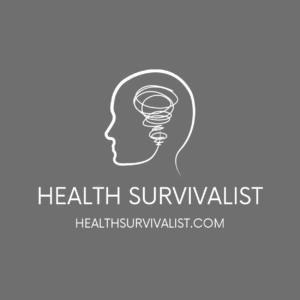In our journey towards holistic well-being, we sometimes encounter unexpected situations, like accidentally consuming moldy food. While it may trigger concerns, rest assured, there are natural ways to address this situation and support your body’s balance. Let’s delve into the topic and explore how to handle accidentally eating food with traces of mold, using nature’s wisdom.

Encountering Mold on Food Naturally
The sight of mold on your food might raise a few eyebrows, especially when aiming for a natural lifestyle. Remember, nature is both complex and adaptable, and molds are a part of it. However, not all molds are detrimental to health, and our bodies possess innate abilities to manage these encounters.
Distinguishing Beneficial Molds from Harmful Ones
Nature often provides us with beneficial molds, like those used in traditional food fermentation. These molds can contribute to digestion and overall health. Conversely, certain molds, like the infamous black mold, can pose health risks. If you’re uncertain about the mold’s type, it’s prudent to proceed with caution.
Natural Defense Mechanisms
Our bodies are equipped with natural defense mechanisms to deal with occasional mold exposure. Our immune system plays a vital role in addressing minor encounters. While some individuals might experience mild discomfort, it’s generally a transient response that the body can manage.
Harmonizing Actions
Should you find yourself unintentionally consuming moldy food, here’s a natural approach to consider:
- Stay Calm: Embrace a mindful approach to the situation, acknowledging that your body is well-prepared to handle this occurrence.
- Hydrate Naturally: Amplify your hydration with nature’s gift – water. Proper hydration aids in flushing out potential irritants.
- Mindful Observation: Listen to your body’s cues in the hours following the incident. Should discomfort arise, consult a holistic healthcare provider.
- Nature’s Discard: Safely remove moldy portions from the food and verify that the remainder is mold-free before consuming.
- Preventive Harmony: Moving forward, adopt a preventive stance by thoroughly examining your food for mold.
Holistic Healthcare
If severe symptoms like persistent digestive distress or respiratory issues emerge, seek guidance from a holistic healthcare expert. While the risk of significant health complications from minor mold exposure is low, prioritizing your well-being is paramount.
Embracing Nature’s Resilience
In the realm of natural wellness, encountering moldy food is a chance to reaffirm your connection with nature’s wisdom. Your body is equipped with the tools to navigate this scenario and regain equilibrium. Be attuned to your body, harmonize with its needs, and remember that nature’s remedies are always available to support you. As you continue your holistic journey, let this experience serve as a reminder of the resilient harmony we share with the natural world.
What to Do If You Accidentally Ate Black Mold
I’ll never forget the day I accidentally ate something with black mold on it. It was a leftover sandwich I had forgotten about in the back of the fridge. After the initial shock and disgust, I realized I needed to act quickly to handle the situation properly. Here’s what I learned and what you should do if you ever find yourself in a similar scenario.
Stay Calm and Assess the Situation
First things first, don’t panic. Most molds, including black mold, are not as harmful when ingested in small quantities as they are when inhaled. However, it’s still important to take the right steps to protect your health.
Remove the Moldy Food
If you notice black mold on something you’re eating, stop immediately and discard the food. Make sure to wrap it in a plastic bag to prevent the mold spores from spreading. Clean any surfaces that the moldy food touched to avoid contamination.
Rinse Your Mouth
After disposing of the moldy food, rinse your mouth thoroughly with water. This helps to remove any residual mold particles. You might also want to brush your teeth and gargle with mouthwash for extra precaution.
Drink Plenty of Water
Drinking water can help flush out any toxins that you might have ingested. Aim to drink several glasses of water over the next few hours. Staying hydrated is always beneficial, especially when you’re dealing with something potentially harmful.
Monitor for Symptoms
Most healthy individuals won’t experience severe symptoms from ingesting a small amount of black mold, but it’s important to be vigilant. Keep an eye out for any signs of an adverse reaction, such as:
- Nausea or vomiting
- Stomach cramps
- Diarrhea
- Allergic reactions (e.g., itching, rash, or swelling)
- Respiratory issues (though more common with inhalation)
If you experience severe symptoms or have a pre-existing health condition, seek medical attention promptly.
When to Seek Medical Help
While most cases of accidentally eating moldy food won’t lead to serious health issues, there are instances when you should consult a healthcare professional. If you develop persistent symptoms, or if you have a compromised immune system, asthma, or severe allergies, it’s best to err on the side of caution and get medical advice.
Preventing Future Incidents
To avoid accidentally eating moldy food in the future, make it a habit to:
- Regularly clean out your fridge and pantry.
- Store food in airtight containers.
- Label leftovers with dates and consume them within a safe timeframe.
- Check for signs of mold before eating any food that’s been stored for a while.
Accidentally eating black mold is unpleasant, but with these steps, you can handle the situation effectively and minimize any potential health risks. Always be mindful of what you’re eating and maintain good food storage practices to keep mold at bay.
Overcoming the Fear of Eating Moldy Foods
After my accidental encounter with black mold, I found myself becoming overly cautious about the food I was eating. It’s completely natural to develop a fear of eating moldy foods after such an experience. Here’s how I managed to overcome that fear and regain my confidence in my food choices.
Understand the Types of Mold
Educating yourself about different types of mold can help alleviate some of the fear. Not all molds are harmful, and some are even used in food production, like the blue mold in blue cheese. Understanding that only certain molds, like black mold, pose a significant health risk can put your mind at ease.
Develop a Routine for Checking Food
I started implementing a regular routine to check my food for any signs of mold before eating. This involved:
- Inspecting leftovers visually for any discoloration or fuzzy patches.
- Smelling food to detect any off odors, which can be a sign of spoilage.
- Cutting into fruits and vegetables to ensure there’s no hidden mold inside.
By incorporating these steps into my routine, I felt more in control and less anxious about consuming moldy food.
Improve Food Storage Practices
Proper food storage is key to preventing mold growth. Here are some tips that helped me:
- Store perishable items in the refrigerator or freezer.
- Use airtight containers to keep out moisture and mold spores.
- Label leftovers with the date they were made and aim to consume them within a few days.
- Keep your refrigerator clean and at the correct temperature (below 40°F or 4°C).
These practices significantly reduced the chances of finding moldy food in my kitchen, helping to ease my fears.
Gradual Exposure and Positive Experiences
To overcome my fear, I gradually exposed myself to situations involving food that might be more prone to mold. For instance, I would eat berries or bread, which can mold quickly, but only after carefully inspecting them. Positive experiences with these foods helped rebuild my trust in my ability to identify and avoid mold.
Talk About It
Discussing your fears with friends or family can be surprisingly helpful. Sharing my experience and hearing others’ stories made me realize that many people have similar concerns. It’s a common issue, and talking about it can reduce the anxiety surrounding the fear.
Seek Professional Help If Needed
If your fear of moldy foods becomes overwhelming or starts affecting your daily life, consider seeking help from a professional. A therapist can provide strategies to manage and overcome your fear, ensuring it doesn’t interfere with your overall well-being.
By taking these steps, I was able to overcome my fear of eating moldy foods and enjoy my meals without constant worry. It’s about finding a balance between caution and confidence, and knowing that with proper care and attention, the risk of consuming harmful mold can be minimized.
Building Confidence in Your Food Choices
After addressing my fear of moldy foods, I realized it’s also important to maintain a healthy environment at home to further minimize the risk of mold growth. A key factor in preventing mold is managing the humidity levels in your living space. High humidity can contribute to mold growth, not only on food but also on surfaces around your home.
Controlling Humidity Levels
One effective way to combat mold growth is by controlling the humidity in your home. Aim to keep indoor humidity levels between 30% and 50%. Here are a few tips to achieve this:
- Use a Dehumidifier: A dehumidifier can help reduce excess moisture in the air, particularly in damp areas like basements and bathrooms.
- Ventilation: Ensure your home is well-ventilated. Use exhaust fans in the kitchen and bathroom, and open windows when weather permits to improve air circulation.
- Houseplants: Certain houseplants, like Boston ferns and peace lilies, can help absorb moisture from the air.
For more detailed solutions on managing humidity, check out Breathe Easy: Quick Fixes for Low Humidity in Your Home. This guide offers practical advice on creating a comfortable and mold-free environment.
Proper Cleaning Practices
Keeping your home clean is another crucial step in preventing mold. Regularly wiping down surfaces, especially in the kitchen and bathroom, can help keep mold at bay. Here are some cleaning tips that have worked well for me:
- Disinfect Regularly: Use a disinfectant cleaner on countertops, sinks, and other high-moisture areas.
- Check Hidden Areas: Mold can grow in hidden spots like under the sink, behind the refrigerator, or inside cabinets. Periodically check these areas and clean as needed.
- Laundry Routine: Wash dish towels, sponges, and other kitchen textiles frequently. Ensure they are thoroughly dry before storing them.
Eating Fresh
Another strategy to avoid moldy food is to buy fresh and consume food quickly. Here are some habits I’ve adopted:
- Smaller Grocery Trips: Instead of doing one large grocery run, I opt for smaller, more frequent trips. This way, I’m more likely to consume food before it has a chance to go bad.
- Meal Planning: Plan your meals ahead of time to ensure you use all the ingredients you buy. This reduces waste and the likelihood of finding moldy food in your fridge.
Understanding Expiration Dates
Learning to interpret expiration dates can also help reduce your fear. “Sell by,” “best by,” and “use by” dates can be confusing, but understanding them is crucial:
- Sell By: Indicates how long a store should display the product. It’s usually safe to consume for a short period after this date.
- Best By: Suggests when the product will be at its best quality. It’s not necessarily a safety date.
- Use By: The last date recommended for use while at peak quality. Beyond this date, the product may not be safe to eat.
Seeking Support
If your fear of eating moldy foods persists, it might be helpful to seek support from a community or forum. Many people share similar experiences and can offer advice and reassurance.
By following these strategies, I’ve been able to manage my fear of moldy foods effectively. Maintaining a clean, low-humidity home environment and being mindful of food storage and expiration dates have made a significant difference. For more tips on maintaining a healthy home environment, don’t forget to check out Breathe Easy: Quick Fixes for Low Humidity in Your Home.
As an Amazon Associate we earn from qualifying purchases through some links in our articles.




